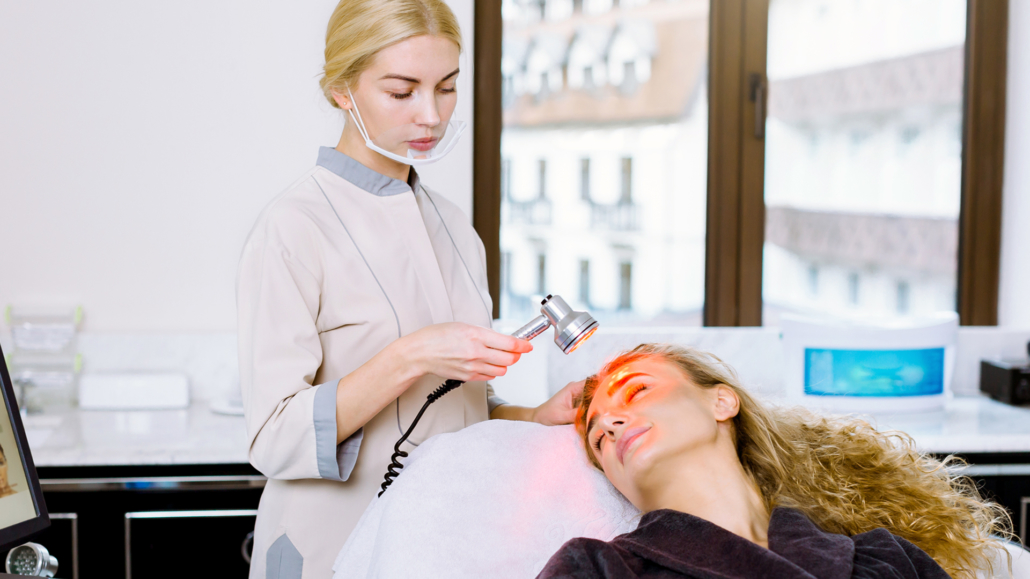Navigating Red Lights: The Basics of Red Light Therapy
No, red light therapy does not involve meditating when you’re stuck at a red light. Without a doubt, taking deep breaths during rush hour is a great stress management technique. The red light therapy in this article has to do with near or far infrared wavelengths that are emitted from a wide variety of tools and products—infrared saunas, lasers and lamps being some of the most popular.
What is Red Light Therapy Used For?
Many people associated red light therapy (RLT) with anti-aging and beauty. But in the realm of functional medicine, the applications of RLT—first used in a clinical setting to treat tuberculosis over a century ago—go beyond skin deep.
RLT may help reduce systemic inflammation. And in doing so, the body can begin to heal itself and function in a state of homeostasis. Truth be told, articles on mainstream medical websites suggest that there is not enough research on RLT to claim that it’s superior to other healing modalities for most health concerns.
One-off studies—usually involving a small number of trial participants—have demonstrated positive results for dementia, hair loss, joint pain and skin aging. However, when it comes to multi-systemic inflammatory conditions such as Lyme Disease, you won’t find support for RLT on a website like WebMD. But that doesn’t mean that red light therapy doesn’t work for Lyme Disease or other enigmatic conditions.
Near Infrared Vs Far Infrared: Which Is Better?
RLT goes by several different names, including low-level laser therapy (LLLT), low-power laser therapy (LPLT), and photobiomodulation (PBM), cold-laser therapy, etc.
Within the realm of RLT, there are two different light wavelength modalities: Near-infrared (NIR) and far infrared (FIR). NIR is visible to the naked eye while FIR is invisible. When it comes to choosing NIR vs FIR for a certain condition, it’s best to consult with an Innovative Medicine practitioner. In general, NIR may be effective for topical issues such as skin anti-aging. As for FIR, most experts suggest it’s superior for lowering toxic load in the body. This in turn reduces multi-systemic inflammation in the body, allowing the healing process to begin.
How Does Red Light Therapy Work?
Regardless of the device used or type of wavelength (NIR or FIR), RLT works by penetrating the epidermis and working at the cellular level. In the cells, RLT acts directly on the mitochondria. In the human body, there are approximately 37 trillion cells and each one has mitochondria, which can be thought of as mini power-generating stations.
RLT may enhance mitochondrial function and improve overall cellular health. Through this action, RLT helps to increase the production of energy in the body and organ function.
Sauna Vs Infrared Sauna
When it comes to infrared saunas, here’s how it works in comparison to traditional Swedish saunas: With the latter, a heating element (such as rocks) heats the ambient air to 185-200 degrees. For many people, sitting for a long time in order to derive any potential benefit from a traditional sauna becomes uncomfortable after just a few minutes. (Not to mention that schvitzing, contrary to popular opinion, doesn’t do much for detoxing; mostly what it does is deplete your electrolytes.)
Infrared saunas, on the other hand, don’t heat the ambient air. Instead, it works on a specific range of wavelength frequency that penetrates organ tissues and fat cells. The frequencies within the infrared spectrum harmonize (resonate) at the same frequency as water within the human body.
Research studies have demonstrated that RLT has the potential to dilate the blood vessels, allowing for enhanced blood circulation. Consequently, more nutrients and oxygen are delivered to the cells.
Red Light Therapy For Autoimmune Symptoms
While there may be a dearth of peer-reviewed medical studies for RLT on specific conditions marked by a hyper-immune response, there is plenty of anecdotal evidence and scientific papers that offer support.
One episode of the Innovative Medicine podcast intersects anecdotal evidence and scientific research. The episode features Dr. Rob Besner, CEO of Therasage, a company that has been researching and developing red light therapy products for over two decades and is considered a major innovator in the industry.
Dr. Besner’s daughter, Julia, used RLT to help with her Lyme Disease. It not only helped to manage some of Julia’s symptoms, but was also the catalyst that launched the company. Dr. Besner realized that his daughter’s regimen of antibiotics, pain medicines, muscle relaxers, and anti-viral medication was making her body highly toxic.
Like Augusto and Michaela Odone, the parents who searched for a cure for their son Lorenzo’s adrenoleukodystrophy (ALD), made famous in the movie Lorenzo’s Oil, Dr. Besner went on a quest to find viable healing options for his daughter.
Eventually, Dr. Bresner would learn everything there is to know about red light therapy, including its potential to mitigate pain and aid in the body’s detoxification process. Channeling his inner Thomas Edison, Dr. Bresner invented infrared heating pads and a portable, reasonably-priced infrared sauna to support Julia’s immune system (and eventually thousands of other people).
As a result of Dr. Bresner’s innovation, “many Lyme Literate Medical Doctors (LLMD) and alternative, complementary medical practitioners recommend and use infrared for detoxification…and relieving pain.”

Risks Of Red Light Therapy
While RLT is a viable option for many conditions, there are risks associated with its use. For example, there have been personal injury complaints filed against infrared product manufacturers. Most of the claims relate to burns and blisters, mostly as a result of faulty devices.
In addition, some RLT products such as lasers may cause eye or vision damage, if proper eye protection is not worn.
Like any other industry, not all RLT products are created equal. For best results, if you’re curious about trying an infrared therapy, do so under the supervision and recommendation of a medical professional.
Disclaimer: The statements made in this article have not been evaluated by the Food and Drug Administration. Any products or treatments mentioned are not intended to diagnose, treat, cure, or prevent any disease. Please consult a licensed medical practitioner for medical advice.
At Innovative Medicine, we believe in transparency. We want you to know that we may participate in affiliate advertising programs pertaining to products mentioned herein.
See how we can help you restore complete health of body, mind & spirit.
Join our mailing list and receive exclusive offers + information!







Leave a Reply
Want to join the discussion?Feel free to contribute!